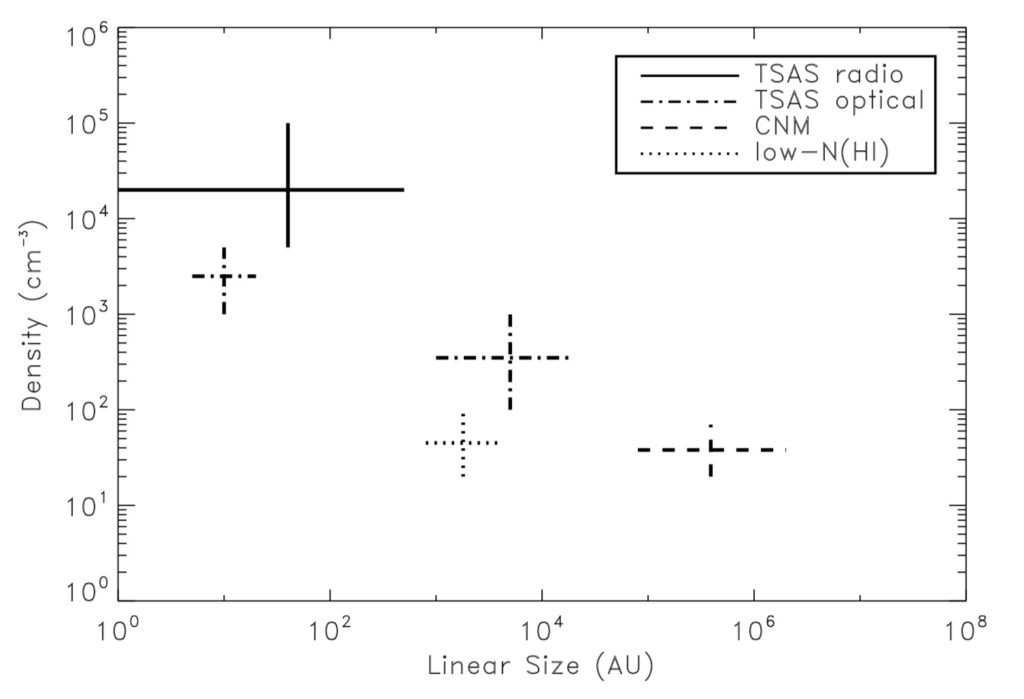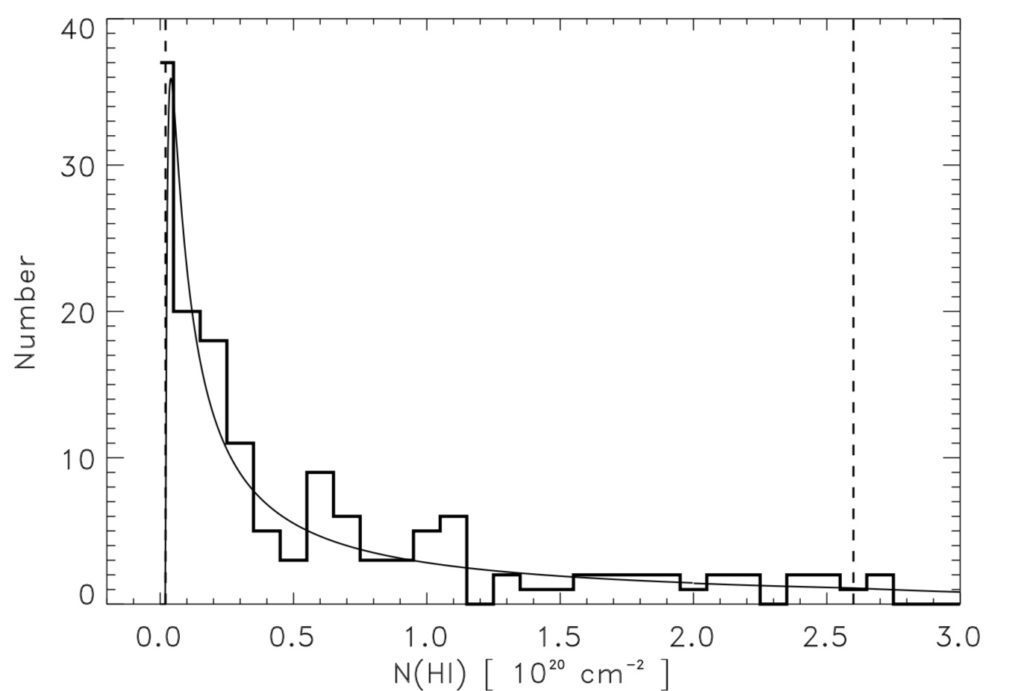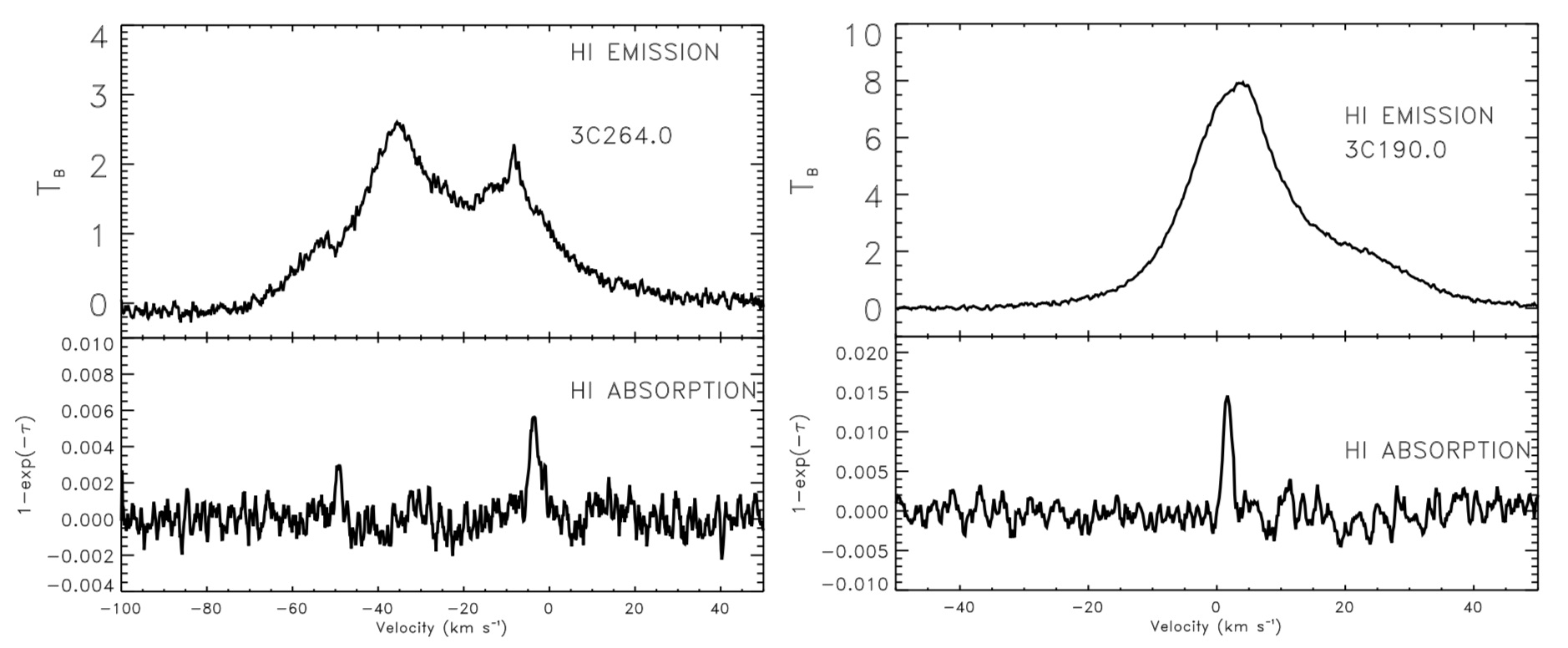We have obtained deep HI observations in the direction of 22 continuum sources without previously detected cold neutral medium (CNM). 18 CNM clouds were detected with a typical HI column density of 3×1018 cm-2. Our surprisingly high detection rate suggests that clouds with low HI column densities are quite common in the interstellar medium. These clouds appear to represent an extension of the traditional CNM cloud population, yet have sizes in hundreds to thousands of AUs. We present properties of the newly-detected CNM sample, and discuss several theoretical avenues important for understanding the production mechanisms of these clouds.
Stanimirovic, S.; Heiles, C.; Kanekar, N.
2007, SINS – Small Ionized and Neutral Structures in the Diffuse Interstellar Medium, 365, 22
http://adsabs.harvard.edu/abs/2007ASPC..365…22S
Introduction
While properties and origin of the AU-scale structure in the cold neutral medium (CNM) are still under debate, a possibly related new population of CNM clouds has been discovered recently. Using the Westerbork radio telescope, Braun & Kanekar (2005) detected very weak HI absorption lines toward three high-latitude sources. Along each line of sight multiple absorption lines were detected, with the peak optical depth of only 0.1 to 2%. Stanimirovi ́c & Heiles (2005) used the Arecibo telescope to confirm the existence of these low-optical-depth CNM clouds in directions of two of the sources. They also emphasized that these clouds have HI column densities among the lowest ever detected for the CNM, ∼ 10^18 cm−2. We will therefore call these clouds the ‘low-N(HI)’ clouds.
How atypical are low-N(HI) clouds? From the theoretical point of view, the traditional CNM clouds have a typical size of 2 pc and N(HI) ∼ 3 × 10^20 cm−2, the lowest expected column density being 6 × 10^19 cm−2 (McKee & Ostriker 1977). From an observational point of view, the recent survey by Heiles & Troland (2003, HT03) suggested a typical N (HI) = 0.5 × 10^20 cm−2 for CNM clouds. While column densities of low-N(HI) clouds are 30–50 times lower than theoretical and observational expectations, these densities are close to what is measured for the tiny scale atomic structure (TSAS), N(HI) ∼ a few × 10^18 to 10^19 cm−2 (Heiles, SINS). In Figure 1 we illustrate graphically how low- N(HI) clouds compare with TSAS and CNM clouds by plotting the typical linear size and HI volume density for these three types of objects. Low-N(HI) clouds occupy the region in this diagram between TSAS and CNM clouds, the regime that is currently observationally probed only with optical observations of globular clusters (e.g. Meyer & Lauroesch 1993).


Summary
The CNM clouds with N(HI) ∼ 10^18 cm−2 are easily and frequently detected with deep radio integrations. These clouds are very thin along the line of sight, L(||) ∼ 800–4000 AU, and could be related to TSAS. They are evaporating very fast, unless being surrounded by a lot of mild WNM, T ∼ 10^2 − 10^4 K, in which case they could last for up to ∼ 1 Myr. The CNM fraction relative to the total HI column density also supports the existence of large WNM envelopes which contribute up to 95-99% of the total N(HI). The combined histogram of N(HI) for ‘classic’ CNM clouds and low-N(HI) clouds can be fitted with a single function, Φ(N) ∝ N^−1. This suggests that low-N(HI) clouds are, most likely, a low column density extension of the CNM cloud population.
